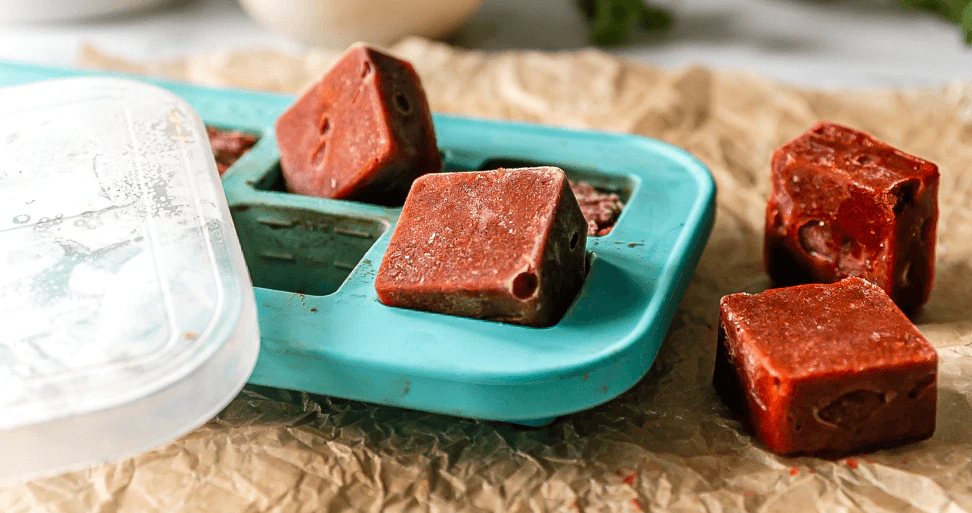You probably already know that calcium is necessary for strong bones, but did you know that it plays a role in your heart rhythms too? Calcium has many functions including tissue maintenance, blood vessel contraction, blood clotting, and normal hormone release.
Since it's the most abundant mineral in your body, it's important that you maintain a steady supply of calcium in your diet through food and/or supplements. But it's not always easy to make sure you have calcium-rich foods available.
And that's where your freezer comes in handy. By prepping meals that contain good sources of calcium, you'll know that when you reach for a pre-portioned, homemade freezer meal, you're getting the nutrition you need.
To make sure you’re getting the iron you need, we’ve compiled a list of the best dietary iron sources and recipes that you can freeze to make sure you’re providing your body with the nutrients it needs. Not only will you get your daily dose of iron, you’ll do it in a budget-friendly way when you batch cook and freeze these iron-rich recipes in your Souper Cubes.
Recommended Dietary Allowance (RDA) for Calcium

The Recommended Dietary Allowance (RDA) for calcium is the same for men and women at all ages except for women 51-70 years. The higher amount is needed for post-menopausal women to account for the reduction in estrogen and increase in bone remodeling.
What Happens If You Don't Eat Enough Calcium
Since your body needs calcium for daily functions, it removes calcium from your bones to maintain a steady amount circulating in your blood. This means if you aren't eating enough calcium through food or supplements, your body will signal a hormone to remove calcium from your bones to keep the calcium balance in your blood normal. While the calcium removed from your bones could be temporary when you eat more calcium-rich foods, it's not always replaced, which is why it's so important to make sure you're consistently eating foods with calcium.
Amount of Calcium in Animal Foods

Amount of Calcium in Plant Foods

How Your Freezer Can Help You Get More Calcium
Since calcium is so important to incorporate into your daily diet, having some calcium-rich meals already prepped is key. We're all short on time and instead of spending money on takeout or prepared food, make your own in batches and freeze in 1 cup and 2 cup portions so you can have calcium-rich meals ready in minutes.
Souper Cubes allow you to freeze your meals in ½-cup, 1 cup, and 2 cup portions so you only defrost what you want, when you want it.
If you're new to freezer meal prep, check out this Ultimate Guide to Freezer Meal Prep. It has everything you need to know from what you can freeze, how to freeze, and how to defrost your food.
Freezer-Friendly Recipes with Calcium
All of the recipes we've picked have at least 20% (200mg) of the daily recommended intake of calcium for most adults, with many having up to 30%.
Cinnamon-Roll Overnight Oats - 271mg calcium per 2⁄3 cup serving

Overnight oats are made by combining rolled oats, liquid, and flavorings then allowing the oats to soften overnight. This recipe for cinnamon roll-flavored oats makes 5 servings but instead of eating them for 5 days in a row, freeze the remaining overnight oats in 1 cup Souper Cubes.
How to Freeze: freeze the oats in 1 cup portions.
How to Reheat: place the oats in a bowl and let thaw overnight in the fridge. Or place the oats in a microwave-safe bowl and microwave on high in 1-minute intervals, stirring occasionally, until soft.
Spinach & Mushroom Quiche- 358mg calcium per slice

(recipe and photo: EatingWell.com)
This recipe for spinach and mushroom quiche calls for a 9-inch pie pan but you can use your 1 cup and 2 cup Souper Cubes to make individual portions. To see how we do it, check out this recipe for Mini Crustless Breakfast quiches.
How to Freeze: freeze the quiche in 1 cup and 2 cup portions in the trays or let cool completely and pop out into freezer-safe storage bags.
How to Reheat: place the quiche on a microwave-safe plate and cook in the microwave on high in 1 minute intervals until hot. Or place in the Souper Cubes stoneware in a 375F oven and bake, covered, until hot, about 20 minutes.
One-Pan Chicken Parmesan Pasta - 213mg calcium per 1½ cup serving

(recipe and photo: EatingWell.com)
Using the one-pot pasta method, the noodles cook in the same pan as the chicken and seasonings, no stirring required. If you're going to batch cook this pasta, make it in a large pot and double the recipe. Transfer the pasta to 1 cup and 2 cup portions and skip broiling.
How to Freeze: prepare the pasta through Step 2 and transfer to 1 cup and 2 cup trays. Top with the mozzarella, panko, and Parmesan and freeze.
How to Reheat: place the pasta in a microwave-safe bowl and cook in the microwave on high in 1 minute intervals, stirring occasionally, until hot. Or place in the Souper Cubes stoneware in a 400F oven and bake, covered with foil, until hot, about 30 minutes. Remove the foil and continue cooking until bubbling around the edges, about 10 minutes more. Serve topped with basil.
Vegetarian Enchilada Casserole - 281mg calcium per 11⁄2 cup serving

(recipe and photo: EatingWell.com)
The beans, tortillas, sour cream, and cheese are your calcium friends in the veggie-heavy casserole. This recipe is also incredibly flexible as you can use many types of vegetables and increase or decrease the seasoning based on your families palate.
How to Freeze: prepare the casserole through Step 2 directly in the 1 cup and 2 cup trays.
How to Reheat: place frozen casserole cube(s) in the Souper Cubes stoneware in a 400F oven and bake, covered with foil, until thawed, about 30 minutes. Remove the foil and continue cooking until bubbling around the edges, 15 to 20 minutes more. Serve topped with avocado, scallions, and sour cream.
Pineapple Green Smoothie - 297mg calcium per 11⁄2 cup serving

(recipe and photo: EatingWell.com)
Almond milk, Greek yogurt, baby spinach and chia seeds make this delicious smoothie a calcium-bomb. Make a double (or triple) portion and keep in your freezer for an easy breakfast or snack.
How to Freeze: freeze the smoothie in ½-cup, 1 cup and 2 cup portions.
How to Reheat: let the smoothie thaw overnight in the fridge or at room temperature for an hour before serving. If in a pinch, place in a glass and microwave for 30 seconds until thawed but not warm.
Tuna Noodle Casserole - 304 mg calcium per 1⅓ cup serving

(recipe and photo: EatingWell.com)
Milk, tuna, and Parmesan cheese come together in this lighter take on the classic tuna casserole. For an even bigger boost of calcium, swap the tuna for canned salmon.
How to Freeze: transfer the casserole to 1 cup and 2 cup portions at the end of Step 3. Sprinkle with breadcrumbs and Parmesan and freeze.
How to Reheat: place frozen casserole cube(s) in the Souper Cubes stoneware in a 400F oven and bake, covered with foil, until thawed, about 30 minutes. Remove the foil and continue cooking until bubbling around the edges, 15 to 20 minutes more.
Smoked Gouda & Broccoli Soup - 267mg calcium per 1½ cup serving

(recipe and photo: EatingWell.com)
This creamy broccoli soup doesn't have any cream at all but you could use half milk and half broth to give it an additional boost of calcium. Skip placing the croutons on top if freezing but be sure to make them when you serve the soup.
How to Freeze: freeze the soup in 1 cup and 2 cup portions.
How to Reheat: place the soup in a microwave-safe bowl and cook in the microwave on high in 1 minute intervals, stirring occasionally, until hot. Or place the soup in a small pot on the stove and add a splash of water. Reheat over medium heat, stirring occasionally, until hot.
Easy Saag Paneer - 700mg iron per 1 cup serving

(recipe and photo: EatingWell.com)
You'll get almost an entire day's worth of calcium with this easy saag paneer recipe thanks to spinach, cheese, and yogurt. Look for paneer in well-stocked cheese sections of your grocery store or at an Indian market.
How to Freeze: freeze the saag paneer in 1 cup and 2 cup portions.
How to Reheat: place the saag paneer in a microwave-safe bowl and cook in the microwave on high in 1 minute intervals, stirring occasionally, until hot. Serve with rice and naan.
Cheesy Black Bean & Quinoa Casserole - 326mg calcium per 1⅓ cup serving

(recipe and photo: EatingWell.com)
Quinoa gives this cheesy, gluten-free casserole a boost of protein but it also works with any type of grain. Opt for the sharpest cheddar you can buy for the most flavor.
How to Freeze: transfer the casserole to 1 cup and 2 cup portions at the end of Step 3.
How to Reheat: place frozen casserole cube(s) in the Souper Cubes stoneware in a 400F oven and bake, covered with foil, until thawed, about 30 minutes. Remove the foil and continue cooking until bubbling around the edges, 15 to 20 minutes more. Serve topped with cilantro and salsa.










We would love to hear your ideas or better yet, post a photo of your cubes organized in our Freezer Meals & Recipes Facebook Group!